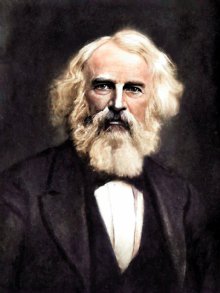Overview
Henry Wadsworth Longfellow’s 1861 narrative poem tells a swift, myth-making version of the events of April 18–19, 1775, when colonist Paul Revere rode at night to warn that British troops were marching toward Lexington and Concord. Addressed in a storyteller’s voice that opens with the imperative “Listen, my children,” the poem blends history with romantic heroism, turning a regional alarm into a national legend of vigilance and civic courage.
The Signal and the Watcher
The action begins with Revere arranging a covert signal with a friend in Boston. If the British troops leave “by land” through the Boston Neck, one lantern is to be hung in the belfry of Old North Church; if they cross “by sea” over the Charles River, two lanterns will shine. Revere promises to be on the Charlestown shore, ready to ride and spread the alarm “through every Middlesex village and farm.” The poem then shadows the unnamed friend as he slips through darkened streets, ascends the wooden stairs and trembling ladders of the church, and takes his post in the belfry-chamber. Longfellow saturates this vigil with moonlit imagery: the harbor gleams; the British man-of-war Somerset looms like a sentinel; and the friend watches a “line of black” , the stealthy boats , bending across the river. When the time comes, the lanterns flare aloft, tiny stars against the vault of night, releasing the signal Revere awaits.
The Crossing and the Start of the Ride
Revere crosses the Charles with “muffled oar” to avoid detection and receives a swift horse in Charlestown. The setting remains charged with stillness and portent: a rising moon, spectral masts, and a landscape that seems to hold its breath. Once mounted, Revere plunges into the countryside, and the poem fractures the night into vivid, time-stamped scenes that track his progress.
Through Middlesex Villages and Farms
It is midnight by the Medford clock when he thunders across the bridge and wakes the town with his cry. One o’clock finds him in Lexington, the meetinghouse windows blank and bare as if watching his flight. By two he reaches Concord, where the river shines like a silver ribbon and the bridge waits for dawn. Along the road the poem multiplies answering images: a dog’s bay, a farmer’s window glinting into life, a startled cockcrow, the smith’s sparks in the dark. Doors open to his knock; whispered warnings become shouts; the alarm leaps from steeple to steeple and farm to farm, an invisible chain of readiness linking scattered households into a people.
Counterpoint and Tension
Longfellow braids Revere’s gallop with the friend’s tense watch, heightening suspense by alternating the lone rider’s forward rush with the city’s stealthy preparations. The British grenadiers’ measured tread and the silent river crossing clash with the poem’s rippling chorus of response, the countryside awakening to its own defense.
Climax and Aftermath
Dawn brings redcoats to Lexington Green and later to Concord’s bridge, but the poem keeps its focus on consequence rather than battle detail. The night’s hoofbeats become a spark that “kindled the land into flame,” a metaphor for collective uprising. Longfellow closes by projecting Revere’s ride into a perpetual memory: in every later “hour of darkness and peril and need,” Americans will hear, across time, the echoing hoofbeats and the urgent message to rise and stand guard.
Themes and Significance
The poem celebrates alertness, communal action, and the power of a single act to awaken many. Its ballad cadence, refrains, and personified landscape forge legend from history, simplifying events to elevate resolve and unity. Though it takes liberties with the record, the narrative fixes Paul Revere in the national imagination as the midnight herald of American resistance.
Paul Revere's Ride
Paul Revere's Ride, also known as 'The Midnight Ride of Paul Revere,' is a narrative poem that tells the story of American patriot Paul Revere's midnight ride to Lexington and Concord to warn the colonists of the approaching British army during the American Revolution.
Author: Henry Wadsworth Longfellow
 Henry Wadsworth Longfellow, a key figure in American poetry and literature. Learn about his influence and legacy.
Henry Wadsworth Longfellow, a key figure in American poetry and literature. Learn about his influence and legacy.
More about Henry Wadsworth Longfellow
 Henry Wadsworth Longfellow, a key figure in American poetry and literature. Learn about his influence and legacy.
Henry Wadsworth Longfellow, a key figure in American poetry and literature. Learn about his influence and legacy.